
The 11 types of art and their meanings
Art is the way to communicate and aesthetically represent an artist's vision, feeling or opinion. This communication is carried out through a language, such as dance, photography, among others.
The forms of artistic expression are very varied, some emerged in Prehistory, through Ancient and Medieval art.
In the 1920s, the arts were classified into 7 strands, but over time this list has grown. So, today we have 11 types of art, they are:
- Music
- Dance
- Painting
- Sculpture
- theater
- Literature
- Movie theater
- Photography
- Comics
- Electronic games
- Digital art
1. Music
Music is art that is linked to sounds, such as instruments, and voices. It is a very old expression of art, dating back to Prehistory, which has records similar to what we consider music.
It is an art spread all over the world, and even used to present and reproduce aspects of a culture.
A song is formed by a combination of:
harmony: the mixing of sounds and chords;
tempo: determines the speed of the song;
melody: which is formed by a set of sounds or voices (a song may or may not be accompanied by lyrics).
Music is known to be an art that evokes emotions such as nostalgia, joy, euphoria, melancholy, among others. It also promotes dance, accompanies stories and is present in other types of art, such as cinema and theater.
Music can be popular, classical, instrumental or folk. The musical styles are diverse: samba, rock, jazz, bossa nova, reggae, heavy metal, bolero, blues, electronic, sertanejo and forró are some examples.
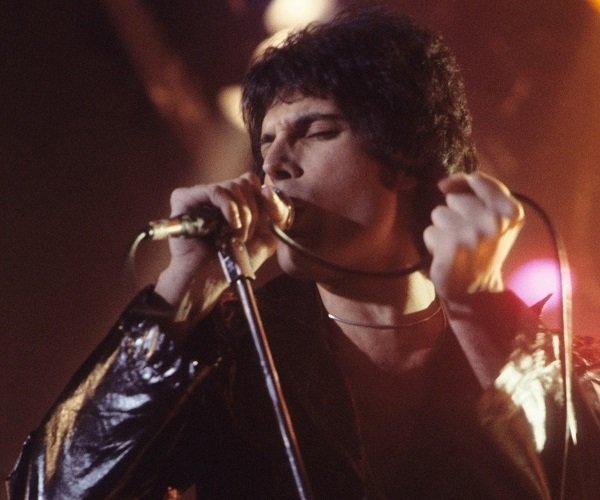
Freddie Mercury was in front of Queen for 20 years, the band was very successful in the 1970s and 1980s.
2. Dance
Dance is an artistic manifestation that is performed through body movements, within a rhythm.
Like music, dancing also exists since antiquity and can be done in solos, pairs or groups and is almost always accompanied by music. In addition to being a type of artistic expression, dancing is also a form of entertainment.
The different types of dance can represent the culture and identity of a society, as is the case with folk or regional dances. There are also celebratory and religious dances.
There are some types of dance: ballet, jazz, ballroom dancing, tap dancing, belly dancing, bolero, frevo, maracatu, hip hop, twist, lambada and contemporary dance.
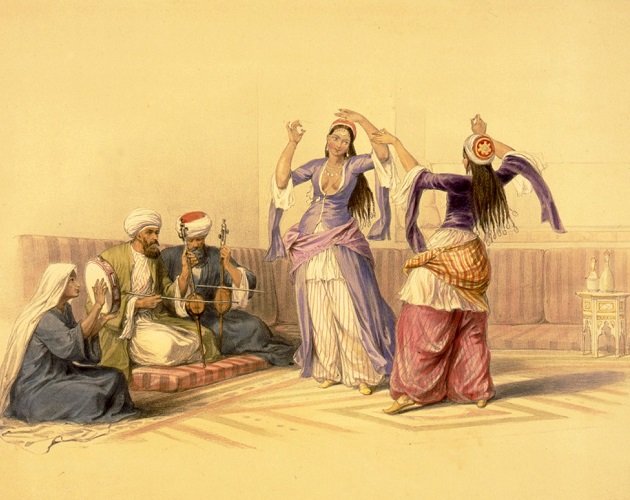
The work Dancing girls at Cairo (David Roberts/1847) shows Egyptian dance in the 19th century.
3. Painting
Painting is another type of art that takes us back to ancient times, and there are signs of this form of expression since the beginning of civilizations.
Painting is a very rich form of manifestation and the techniques and styles can be very representative of a historical period, an artistic movement or a region.
Some examples are cave painting (existing in the prehistoric period) and indigenous body painting (an ancient artistic expression that remains in some tribes. Some are: Realism, Impressionism, Cubism, Abstractionism, Surrealism, Expressionism, Dadaism, Futurism and PopArt.

4. Sculpture
The sculptures are constructed from the manipulation of different materials, such as marble, granite, bronze and wood. They have been known since prehistoric times and appreciated since ancient times.
Sculptures from Ancient Greece and the Roman Empire, for example, are of great historical importance and can still be seen today in many museums around the world.
Some sculptors known for their works are: Michelangelo, Auguste Rodin, Camille Claudel, Marcel Duchamp, Louise Bourgeois, Tomie Ohtake, Fernando Botero, Anish Kapoor, Jeff Koons, Patricia Piccinini, Mark Newman and the Brazilians Aleijadinho, Abelardo da Hora and Francisco Brennand .
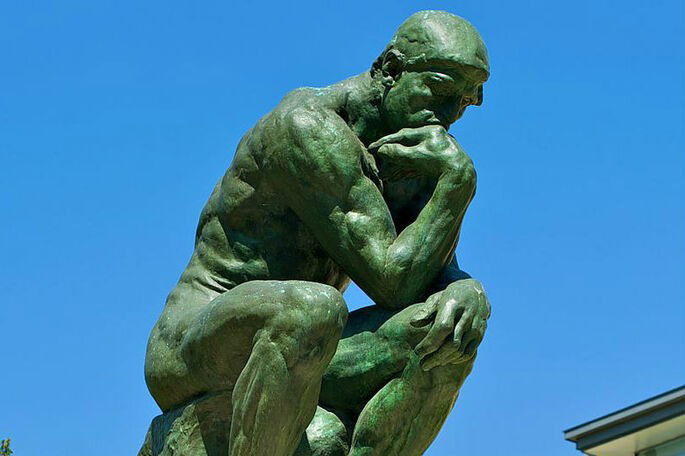
The Thinker (Auguste Rodin/1904) is a very well-known sculpture. It is part of the collection of the Rodin Museum (Paris/France). Photography. Daniel Stockman/Shutterstock.com
5. Theater
Theater is the artistic representation made by actors, who give life to characters to tell stories that can be fictional or real.
The dramaturgical representation can be accompanied by scenarios, sound, music and even interaction with the public.
A theatrical play can be of several genres: drama, comedy, tragedy, historical or musical. It can also be presented in a group or by a single actor (monologue).
Theatrical shows were born in Ancient Greece, where performances took place in squares and in the famous Greek theaters. Some known plays from that time - called Greek Tragedies - are Medea (Euripides), Oedipus the King (Sophocles), Prometheus Bound (Aeschylus) and Electra (Sophocles).
In the 16th and 17th centuries, the English playwright William Shakespeare (1564-1616) wrote important plays, such as: Hamlet, Romeo and Juliet, King Lear, Othello and Macbeth.
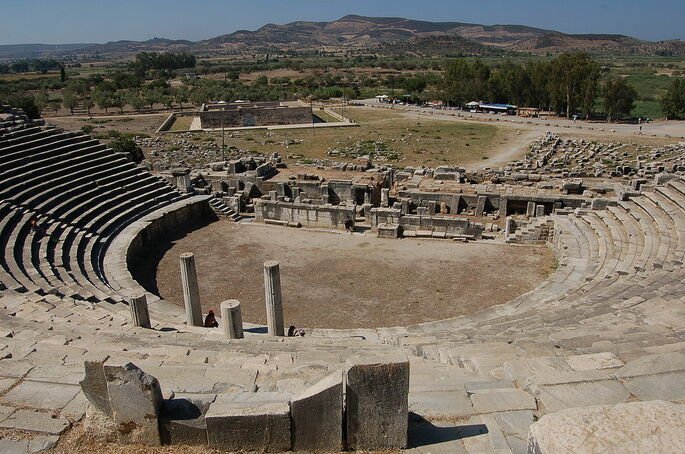
Miletus theater ruins
6. Literature
Literature is a type of art that expresses itself through written words. This writing can be done in prose (colloquial language) or in verse (writing formed by metrics).
It covers different styles such as drama, fiction, chronicle, romance, poetry, history, among others. These styles can belong to three different genres: narrative, dramatic and lyrical.
Throughout history there have been many literary movements, each marked by its own characteristics. Examples are: Baroque, Romanticism, Realism, Parnassianism, Symbolism and Modernism.

Literature expresses opinions, tells stories and narrates historical events.
7. Cinema
Cinema is the artistic expression that reproduces the recording of moving images, called film.
This type of art is constantly influenced by the creation of new technologies and can represent different eras, from black and white silent cinema, to modern animation and science fiction exhibitions.
Cinema - also called the seventh art - has existed since the 19th century, precisely since 1895, when the first cinematographic reproduction took place. Those responsible for the feat were the French Louis Lumière (1864-1948) and Auguste Lumière (1862-1954), also creators of the first projector - the cinematograph.
Like other types of art, cinema is an important means of entertainment, reflection and information. Films can promote reflections on important events, tell stories (real or fictional) and allow the experience of other realities.
There are many genres of cinema such as: drama, comedy, documentary, musical, animation, horror, suspense, action, romance and police.
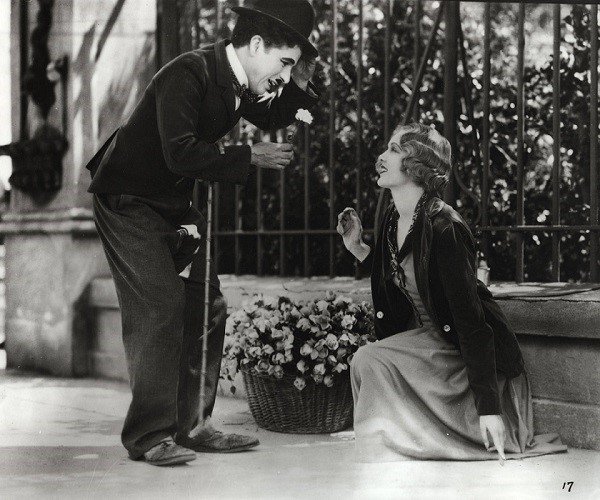
Charles Chaplin (1889-1977) y Virginia Cherrill (1908-1996) en la película City Lights (1931).
8. Photography
Photography is the record of images that are developed and printed. A photograph can be analogue (film development) or digital.
It emerged in the first half of the 19th century, although the processes that gave rise to it appeared about 300 years earlier.
Two inventions were very important for photography to be created: the camera obscura and the daguerreotype.
The camera obscura, demonstrated in 1558 by Giovanni Battista della Porta (1535-1615), is a creation of the principle of photography and image formation. A few centuries later, the creation of the daguerreotype helped popularize photography. The apparatus was created in 1839 by Louis Jacques Mandé Daguerre (1787-1851).
Some important photographers are Pierre Verger, Henry Cartier-Bresson, Cindy Sherman, Steve McCurry, Dorothea Lange, Maureen Bisilliat and the blind photographer Evgen Bavcar.
In Brazilian photography, Sebastião Salgado, Walter Firmo, Vânia Toledo, Boris Kossoy, Bob Wolfenson and Evandro Teixeira stand out.
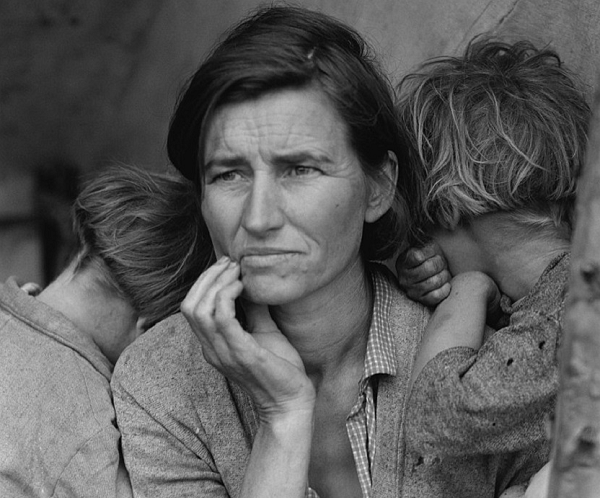
The Migrant Mother photograph, taken by photographer Dorothea Lange in 1936. In the image, Florence Thompson, during the economic depression that hit the United States in the 1930s.
9. Comics
The comic book (HQ) is a story told through sequential drawings of events, thoughts and dialogues of the characters.
The first publication took place in the United States at the end of the 19th century, with the creation of the illustrator Richard Felton Outcault (1863-1925). In Brazil, these stories began to be published in the 1930s.
The comics can be published in their own versions or as supplements in editions, mainly in newspapers. Several comics that were successful were turned into movies, giving more life to the stories of the characters.
Some famous comics are: Recruta Zero, Gato Félix, Mafalda, Zé Carioca, Star Wars, Tio Scrooge, Flash Gordon, Wonder Woman, Spider Man, Batman, Hulk and the Dragon Ball and Naruto manga.
In Brazil, famous comics such as Turma da Mônica, O Tico-Tico, Pererê and O Menino Maluquinho became famous.

Comic strip "Mafalda", created by Argentine Quino
10. Electronic Games
Electronic games are virtual platform games used on televisions, computers or portable devices.
There are numerous types of games and they are usually based on disputes that can be played individually, in pairs or groups. Video games can be structured in phases and to advance you have to go through challenges.
The exact origin of electronic games is not known, but it was in the late 1950s that Willy Higinbotham (1910-1994) created the first electronic game prototype, a kind of tennis match. The first video game console - the Magnavox Odyssey - was created in the 1970s by German engineer Ralph Baer (1922-2014).
Currently electronic games are also available on cell phones and technological innovations bring constant innovations to this form of entertainment.
Some electronic game classics are Street Fighter, Super Mario, Tetris, The Legend of Zelda, Minecraft, Mortal Kombat, Donkey Kong and Sonic.

11. Digital Art
Digital art is the artistic expression that most benefits from technological innovations, founded on the interaction between artistic expressions and technology.
Its emergence took place in the mid-1980s, along with the beginning of the popularization of computers.
This type of art encompasses various forms of digital expression that can include videos, animations, photographs and graphic editions. Illustrations, 3D projections, vector drawings and pixel images are also examples of digital art.
They are important in the history of digital art: Charles Csuri, Andy Warhol, Immo Jalass, Carla Chan and the Brazilian Guto Lacaz.
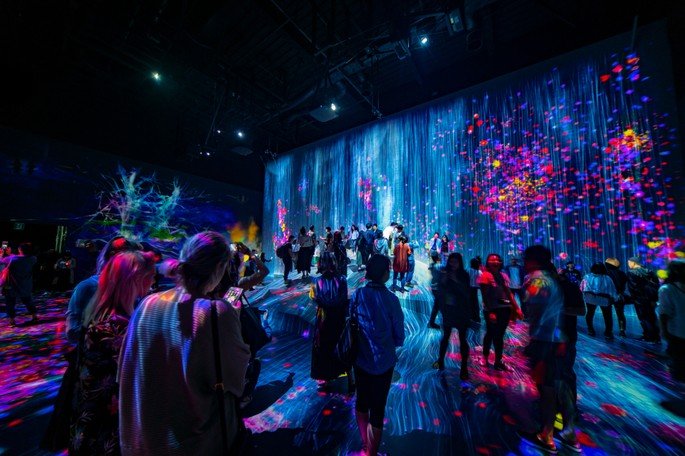



- April 15, 2025
Gallery Of Painting By Matt Rota - USA

- April 15, 2025
Gallery Of Illustration By Egle Plytnikaite - Lithuania

- April 15, 2025
Gallery Of Humor Drawing By Pierre Ballouhey - France

- April 14, 2025
Gallery of Illustration by Ananda Ferreira – Brazil


- April 14, 2025
Gallery of Illustration by Luis San Vicente – Mexico

- April 14, 2025
Art, Culture, and Technologies for Peace

- April 14, 2025
Analysis of Artistic Works Created with…

- April 13, 2025
From Digital Art to Contemporary Art

- April 13, 2025
The Expansion of Photography

- April 12, 2025
When is photography considered art?

- April 10, 2025
Impact of AI on the Diversity of Artist…

- April 10, 2025
How can AI enhance artistic creativity?

- April 09, 2025
The Impact of Artificial Intelligence o…

- April 08, 2025
Latin American art, a goldmine of oppor…

- April 07, 2025
Contemporary Art in Brazil: Between the…

- April 07, 2025
Mexican Muralism: Art for the People

- April 06, 2025
History of graphic art in Brazil

- April 05, 2025
Modern Art: A Renaissance in Art History

- April 02, 2025
Aldo Estrada (Ilustronauta): From Peruv…

- March 31, 2025
How ChatGPT is Turning Photos into Japa…

- March 30, 2025
Arístides Hernández (ARES): A Sharp Min…

- March 30, 2025
The Masters of Cuban Caricature: Celebr…

- March 29, 2025
Where Will Artificial Intelligence Take…

- March 27, 2025
A Few Fascinating Features of Latin Ame…

- March 27, 2025
9 Key Books to Understand Latin America…

- March 26, 2025
The Underground: A Glimpse into 1930s L…

- August 29, 2023
The history of Bolivian art

- February 19, 2024
Analysis and meaning of Van Gogh's Star…

- January 28, 2024
Culture and Art in Argentina

- September 25, 2023
What is the importance of art in human …

- September 23, 2023
What is paint?

- August 10, 2023
14 questions and answers about the art …

- August 30, 2023
First artistic manifestations

- August 23, 2023
The 11 types of art and their meanings

- August 16, 2023
The 15 greatest painters in art history

- March 26, 2024
The importance of technology in art1

- September 23, 2023
History of painting

- April 06, 2024
History of visual arts in Ecuador

- January 31, 2024
Examples of Street Art – Urban Art

- January 20, 2024
What is the relationship between art an…

- March 26, 2024
Cultural identity and its impact on art…

- October 21, 2023
Contemporary art after the Second World…

- September 23, 2023
Painting characteristics

- April 07, 2024
Graffiti in Latin American culture

- August 25, 2024
A Comprehensive Analysis of the Cartoon…

- March 05, 2024
The art of sculpture in Latin America

- February 19, 2024
Analysis and meaning of Van Gogh's Star…

- August 13, 2023
9 Latino painters and their great contr…

- August 29, 2023
The history of Bolivian art

- August 10, 2023
14 questions and answers about the art …

- January 28, 2024
Culture and Art in Argentina

- August 23, 2023
The 11 types of art and their meanings

- November 06, 2023
5 Latin American artists and their works

- September 23, 2023
Painting characteristics

- August 27, 2023
15 main works of Van Gogh

- September 23, 2023
What is paint?

- September 25, 2023
What is the importance of art in human …

- August 30, 2023
First artistic manifestations

- January 20, 2024
What is the relationship between art an…

- January 12, 2024
10 most beautiful statues and sculpture…

- December 18, 2023
10 iconic works by Oscar Niemeyer, geni…

- October 30, 2023
Characteristics of Contemporary Art

- March 26, 2024
Cultural identity and its impact on art…

- August 22, 2023
What are Plastic Arts?

- April 16, 2024
The most important painters of Latin Am…

- October 11, 2023


